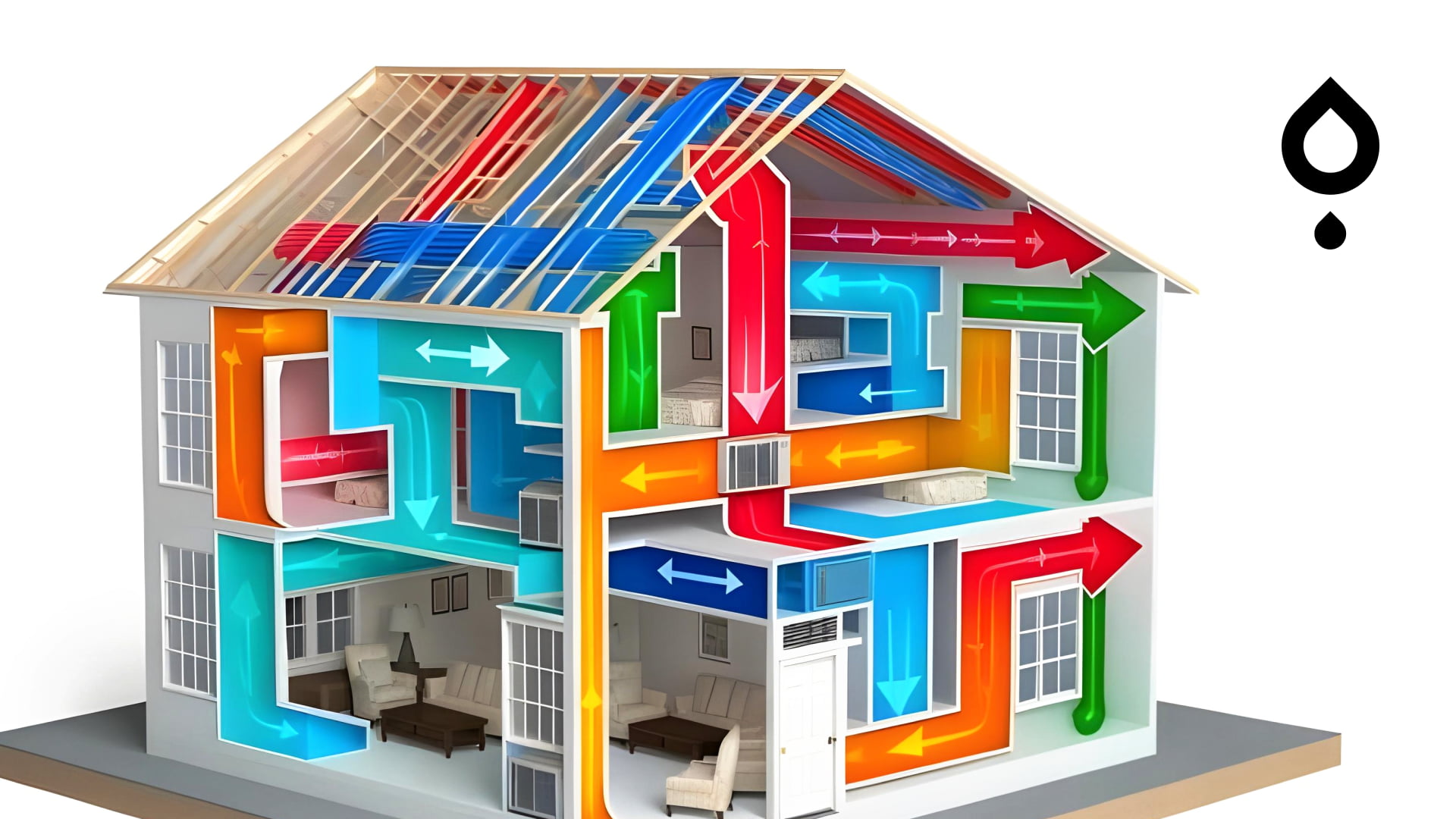
What is HVAC Zoning?
HVAC zoning is a method of climate control that divides your home into separate areas or “zones,” each with its own thermostat programming. Instead of heating or cooling your entire home uniformly, zoning allows you to direct airflow where it’s needed most. This is achieved by installing dampers in your ductwork, which open or close to regulate airflow based on each zone’s specific needs.
A multi-zone HVAC system can be especially beneficial in larger homes, multi-story residences, or homes with rooms that experience drastically different temperatures throughout the day.
How HVAC Zoning Improves Home Comfort
Tired of one room being too hot while another feels like a freezer? Zoned heating and cooling solves that. By customizing temperatures in specific areas, HVAC zoning provides:
- Even comfort throughout the house
- Individual control over different rooms
- Reduction of hot and cold spots
- Personalized settings for each family member
- Better sleep with room-specific climate control
This targeted temperature zoning ensures consistent comfort, no matter how your home is laid out.
Energy Efficiency Benefits of HVAC Zoning
Beyond comfort, one of the biggest advantages of zoning is improved HVAC energy efficiency. Here’s how zoning helps you save:
- Reduces energy waste by avoiding unnecessary heating or cooling in unused areas
- Lowers utility bills with optimized thermostat programming
- Increases equipment lifespan by reducing system strain
- Promotes energy savings by using less power to achieve ideal indoor temperatures
With rising energy costs, an efficient zoning setup can make a noticeable difference in your monthly expenses.
Is HVAC Zoning Right for Your Home?
HVAC zoning isn’t just for new builds. You might benefit from zoning if you:
- Have a multi-story home with uneven temperatures
- Use certain rooms more than others
- Have large open areas or rooms with lots of windows
- Want to customize comfort in different spaces
- Are looking to improve heating and cooling efficiency
Zoning can be added to existing systems with the right equipment and layout, making it a smart upgrade for many homeowners.
How to Install and Maintain an HVAC Zoning System
Installing a zoning system involves:
- Assessment of your home’s layout and airflow
- Adding motorized dampers inside the ductwork
- Installing thermostats in each designated zone
- Connecting the system to a central control panel
To maintain it:
- Schedule regular inspections to ensure dampers function correctly
- Clean ducts and filters to maintain airflow
- Keep your thermostats programmed according to seasonal needs
- Use smart controls for more efficient climate control and energy tracking
With proper installation and maintenance, zoning is a long-term solution to both comfort and savings.
Frequently Asked Questions (FAQs)
How much does an HVAC zoning system cost?
Installation typically ranges from $1,500 to $3,500, depending on the number of zones and system complexity.
Can I add zoning to my existing HVAC system?
Yes, many existing systems can be upgraded with zoning capabilities through added dampers and a control panel.
Do smart thermostats work with zoned HVAC systems?
Absolutely. Smart thermostats offer precise climate control and can enhance the efficiency of your zoned system.
How many zones can I create in my home?
It depends on your system and layout, but most homes can support 2 to 8 zones effectively.
Will HVAC zoning help with allergy or air quality issues?
Yes. Zoning limits air circulation between areas, which can help control allergens and improve air quality in high-sensitivity zones.
Final Thoughts
HVAC zoning offers the perfect balance between comfort, technology, and energy savings. Whether you’re building a new home or upgrading your current system, zoning can provide personalized climate control and long-term benefits for your wallet and well-being. If you’re ready for better comfort and lower bills, a multi-zone HVAC system could be the perfect solution.
